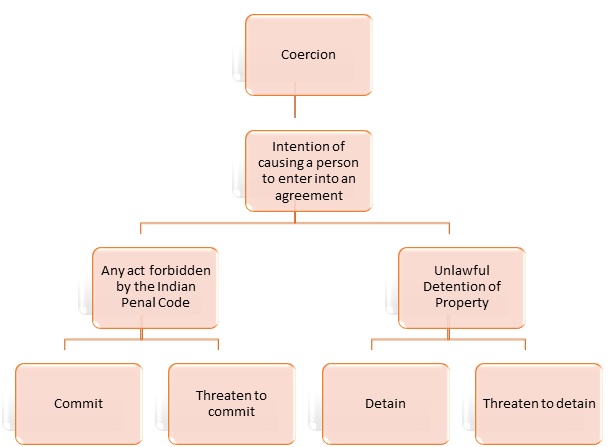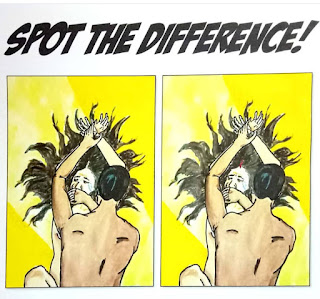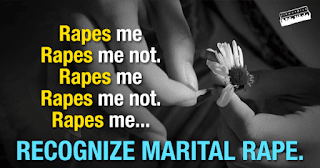India in the 21st century-The need for a refugee status
Abstract:
We live in a chaotic environment,
and this fact does not alter when we look at it from a global perspective.
Since the turn of the twentieth century, we have witnessed conflicts in ways we
could never have imagined. The world has seen everything, from nuclear weapons
to the Cold War, from persecution to people leaving their homes. We, as humans,
have always disappointed ourselves. We created Human Rights for ourselves, and
we are the only ones who violate them. We establish laws, then breach and mold
them to suit our needs. The people are the ones who suffer the most during all
of this crafting and breaking of laws.
Keywords:
Refugee Law, CAA, The 1951 Refugee
Convention, UNHCR
Introduction:
One of the worst conceivable
situations that have occurred over the ages is that people have been made homeless
as a result of conflicts that have occurred both within and outside of
countries. The word "refugee" has become extensively used to describe
persons who have fled to other nations as a result of these wars and the fear
of persecution in their native country. Although international law has a long
history of growth, the identification of refugees is a relatively young field
that was not even examined until World War II.
Many nations have signed various
agreements relating to individuals who have fled their homes and are classified
as migrants, refugees, internally displaced persons, and so on, and have
offered protection and rights to those affected.
India, on the other hand, has long
been regarded as one of the greatest countries in the world for its
hospitality, but it has refused to sign the Convention on Refugees and does not
have its national law for refugees. This article aims to understand why
India has not ratified the 1951 Refugee Convention and why it needs its own
Refugee Law.[1]
The
Refugees' Problem:
A refugee is a person who escapes
from his or her home country and is unable to return because he or she is in
danger of being persecuted due to underlying elements such as race, religion,
nationality, membership in a certain social group, or having a different
political stance.[2]
Thus, we can easily understand why a person is referred to as a refugee. The
main difference between a refugee and an ordinary citizen or even a normal
migrant is that a refugee is to leave his home and is unable to return until
and unless the situation improves and it becomes safe to return, a normal
person or even a migrant who chooses to leave can return whenever he/she
pleases.
The problem with refugees is simply
that they are aliens in any country other than their own country, and they are
unable to use their last resort, which is to return home as a regular alien
would. He also doesn't have the same level of security as a normal alien. His
own country and government do not acknowledge him. Furthermore, such an alien
is always regarded with suspicion and as a suspect by others, and because he is
defenseless, he is prone to the majority of atrocities committed around the
world. The refugee crisis is not new, but it continues to expand regularly.
There exist organizations, international instruments, and rules, like
International Convention on The Protection of The Rights of All Migrant Workers
And Members of Their Families of 18 December 1990, Convention Against Torture
And Other Cruel, Inhuman or Degrading Treatment or Punishment of 10 December
1984, Optional Protocol To The Convention Against Torture and Other Cruel,
Inhuman or Degrading Treatment Or Punishment, etc[3]. But how
well the nations enforce the laws and provide for the protection of refugees is
entirely up to them.
The
Refugee's International Law:
The instruments that specifically
deal with refugee protection in the international arena at the moment are the
1951 Convention, The 1967 Protocol, The United Nations Convention on the Rights
of the Child (UNCRC). These instruments expressly provide that persons
recognized as refugees are entitled to the same treatment as other foreigners
or their nationals in the country where they have sought asylum.
The 1951 Convention[4]
specifies the magnitude of the refugee problem and why international
cooperation is vital in resolving the global refugee crisis. Certain groups of
people have been deemed as not deserving of refugee status, and as a result,
they will be denied any protection given under the Note on the Exclusion
Clauses EC/47/SC/CRP 29 of the 1951 Convention.[5] They are
individuals who have committed crimes against humanity, war crimes, crimes
against peace, or any serious non-political crime outside of the country in
which they are seeking asylum. It also covers those who have been found guilty
of conduct that violates United Nations values[6].
According to the 1951 Refugee
Convention, people who have been granted refugee status receive a slew of
rights, including:
1. The right not to be expelled
unless and until specified, rigorous conditions are met (Article 32);
2. The right not to be punished for
illegal entry into the territory of a contracting State (Articles 17 to
19);
3. The right to work (Articles 17 to
19);
4. The right to housing (Articles 21
and 22);
5. The right to education (Articles
22 and 22);
6. The right to public relief and
assistance (Articles 23);
7. The right to freedom of religion
(Articles 4 and 4);
8. The right to access the courts
(Articles 16 and 16);
9. The right to free movement within
the territory (Article 26); and
10. The right to obtain
identification and travel documents (Articles 27 and 28).
The 1951 Convention also outlines a
few responsibilities that such refugees have toward the governments that grant
them refugee status. The 1967 Protocol[7], on the
other hand, expands the scope of the 1951 Convention's application. It
eliminates the geographical and time constraints that were a major feature of
the 1951 Convention.
The UNCRC's article 22 deals with
refugees[8].
According to this article, a refugee is a child or young person who has been
forced to flee their home country due to war, persecution, or natural disaster.
Children and young people who are refugees have a right to special protection
and assistance. Under the UNCRC, refugee children and young people do not lose
any of their rights simply because they have moved from one country to another.
They have the right to include the following:
●
Shelter
●
Medical Treatment and
●
Education
These tools, however, are not the
only ones that protect refugees. There are other regional tools in place, such
as in Africa there is Kampala Convention (2009), OAU Convention (1969); in
Europe there is Common European Asylum System (CEAS), and in America, there is The United States Refugee Act of 1980. In addition, there is
a well-defined body of international human rights law that complements refugee
rights. States, on the other hand, are
committed to safeguarding the human rights and other fundamental rights of
people classified as refugees.
The
Refugees in India:
India is unquestionably one of the
countries where visitors are regarded as Gods, as it has often demonstrated.
However, circumstances have changed, and India has come under fire for saying
that Rohingyas (refugees fleeing persecution from Burma) will be deported
and will not be permitted to stay in the country. Furthermore, in December
2019, the Indian government, led by Narendra Modi, passed a Citizenship
Amendment Bill, 2019 under which the bill aims to grant Indian citizenship to
people from the Hindu, Sikh, Buddhist, Jain, Parsi, and Christian major
religions who have migrated to India after being persecuted for their religious
belief in Pakistan, Afghanistan, or Bangladesh. Its main goal is to make it
easier for non-Muslim immigrants from India's three Muslim-majority neighbours
to become Indian citizens. The administration has had to face severe protests
across the country since the bill was enacted into law, and the law has also
been heavily criticized. It was the first time that persecuted people were
classified according to their religious beliefs. It has been suggested that
such legislation is incompatible with the Indian constitution, which considers
secularism as a cornerstone of the country and a fundamental characteristic of
the Indian Constitution.
According to UNHCR figures, India is
one of the world's largest refugee centers, with over 200,000 refugees[9].
India lacks a national refugee policy and has not ratified the Refugee
Convention. The UNHCR states unequivocally that India does not officially
recognize refugees. Furthermore, UNHCR makes no distinction between refugees
and other foreign nationals arriving in India. Because India does not have its
refugee law and has not signed any international instruments relating to
refugees. Because there
is no precise legal structure, the Parliament gains the right to rule over
these people at any time, according to the government's views, rendering them
even more vulnerable. Thousands of Tibetan and Sri Lankan refugees have arrived
in India, where they have been provided with adequate shelter and government
assistance[10].
Refugees fleeing from Muslim-majority countries such as Iraq, Iran,
Afghanistan, Myanmar, Sudan, and others, on the other hand, have received no
protection and, instead, have been presented with Identity Proofs, through
which India has granted them just Temporary Residence Permits[11].
As a result of India's refusal to
give UNHCR entry to the Seven North Eastern States, refugee communities such as
the Christian Chin's[12] are
left without identification or protection from either India or UNHCR[13].
The
Refugee Convention and India:
The CAA is possibly the first
“refugee legislation” in the contemporary world to be overwhelmed by hate and
bigotry. A refugee, according to the UNHCR Convention of 1951 and the 1967
Protocol, is someone who has "a well-founded fear of persecution on
account of race, religion, nationality, or political opinion" and is
unable to return to his country or has become "stateless."
India never joined the 1951
Convention because it was considered Euro-centric and intended against
communist regimes, as R.K. Nehru, the foreign secretary at the time, described
it in 1953.[14]
India, like Pakistan, is a member of the UNHCR committee but not a signatory to
the Convention. This does not imply it is free to pursue any policy it wants,
as it is still obligated by the human rights accords to which it has agreed. In
1999-2000, an Eminent Persons Group (EPG) comprising South Asians (excluding
Pakistanis) chaired by Justice Bhagwati drafted a Model Refugee Law (which
later re-wrote) that the Indian government rejected.
The Necessity of Refugee Law:
Although India has never officially
stated why it did not sign the instruments relating to refugees, it is clear
from the practices and opinions of various scholars that India does not accept
the definition of refugees as outlined in the 1951 Refugee Convention because
they fear international criticism and undue interference in what it has
always claimed is its "internal matter"[15]. The
Convention requires signatory countries to provide a minimum level of
hospitality and housing to refugees they accept. Even today, failure to provide
the bare minimum attracts a lot of international criticism for host countries.
Things begin to seem different, however, when we consider how different types
of persons experiencing persecution from other nations are treated in India, as
previously noted. India,
a country founded on the values of peace, harmony, and fraternity, must always
be a haven for refugees. It should be one of the government's primary
responsibilities to maintain the doors open for refugees from other countries,
and there must be no discrimination based on religion, caste, creed, sex, or
ethnicity.
In India, the refugee problem is
comparable to that which exists in other countries. We are merely making the
already vulnerable refugees more vulnerable to human rights breaches by not
having a suitable law. Without a doubt, there are very few laws in India that
protect refugees.
Conclusion:
As a result, the author believes
that India, where so many laws are enacted daily on both a national and an international level should begin to draft a clear, comprehensive, and robust
mechanism to protect refugee rights and make well-defined regulations on
refugee rights such as entry into the country, accommodation, rights, and
responsibilities. It is necessary to create agencies that will solely deal with
the refugee problem and will be responsible and accountable to an independent
authority.
During the Partition, India's
creation as a nation was followed by a large-scale violent mass movement of
people to and from Pakistan. The hesitation of New Delhi, like that of some
other developing countries, to ratify the 1951 Convention stems from a fear of
the economic and political burden that the rehabilitation and relocation of
refugees, as well as the obligations under the global refugee regime, would
impose. India requires domestic refugee legislation to protect those who have
been persecuted, especially in the current times, where the Taliban's fear is vacuuming humans out of Afghanistan and India is expected to host thousands of refugees. A robust mechanism as suggested above would ensure basic
human rights to such people.
BY
AYESHA AFROSE
B.S. ABDUR RAHMAN CRESCENT INSTITUTE OF SCIENCE AND TECHNOLOGY, CHENNAI
[1] India, working enviroinment, https://www.unhcr.org/4cd96e919.pdf, last seen on 16/09/2021.
[2] Pooja, Faculty of Law,
DU, India’s Refugee Policy, Indian
National Bar Association, available at https://www.indianbarassociation.org/indias-refugee-policy/, last seen on 16/09/2021.
[3] United Nations High
Commissioner for Refugees (UNHCR), Collection
of International Instruments and Legal Texts Concerning Refugees and Others of
Concern to UNHCR, https://www.unhcr.org/455c71de2.pdf, last seen on 16/09/2021.
[4] The 1951 Refugee
Convention, https://www.unhcr.org/1951-refugee-convention.html, last seen on 16/09/2021.
[5] Note on the Exclusion
Clauses EC/47/SC/CRP.29, https://www.unhcr.org/excom/standcom/3ae68cf68/note-exclusion-clauses.html, last seen on 16/09/2021.
[6] UN General Assembly, Convention Relating to the Status of
Refugees, refworld, available at https://www.refworld.org/docid/3be01b964.html, last seen on 16/09/2021.
[7] Protocol relating to
the Status of Refugees, https://www.ohchr.org/EN/ProfessionalInterest/Pages/ProtocolStatusOfRefugees.aspx, last seen on 16/09/2021.
[8] UNICEF, An
international agreement for child rights, https://www.unicef.org.au/our-work/information-for-children/un-convention-on-the-rights-of-the-child, last seen on 16/09/2021.
[9] India Fact Sheet, UNHCR The Union Refugee Agency, available
at https://www.unhcr.org/protection/operations/50001ec69/india-fact-sheet.html, last seen on 16/09/2021.
[10] The Indian Express, Here is how various refugee communities have
fared in India, https://indianexpress.com/article/india/rohingya-muslims-refugee-myanmar-india-bangladesh-4843379/, last seen on 16/09/2021.
[11] Refworld, World Refugee Survey 2009 – India, https://www.refworld.org/docid/4a40d2a75d.html, last seen on 16/09/2021.
[12] Myanmmar's community tribe is the Chin
where Christians account for 80% of the population. Also refer https://minorityrights.org/minorities/chin/, last seen on 16/09/2021.
[13] Bansari Kamdar, Indian Refugee Policy: From Strategic
Ambiguity to Exclusion, The diplomat, available at https://thediplomat.com/2020/02/indian-refugee-policy-from-strategic-ambiguity-to-exclusion/, last seen on 16/09/2021.
[14] The Wire, India Needs a Proper Refugee Law, Not a CAA
Suffused With Discriminatory Intent, https://thewire.in/law/india-needs-a-proper-refugee-law-not-a-caa-suffused-with-discriminatory-intent, last seen on 16/09/2021.
[15] The Print, Why India is home to millions of refugees
but doesn’t have a policy for them?, https://theprint.in/opinion/why-india-is-home-to-millions-of-refugees-but-doesnt-have-a-policy-for-them/341301/, last seen on 16/09/2021. Also read, Livemint, Why India would not sign refugee treaty,




Comments
Post a Comment